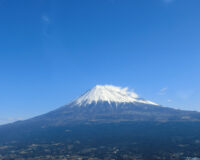
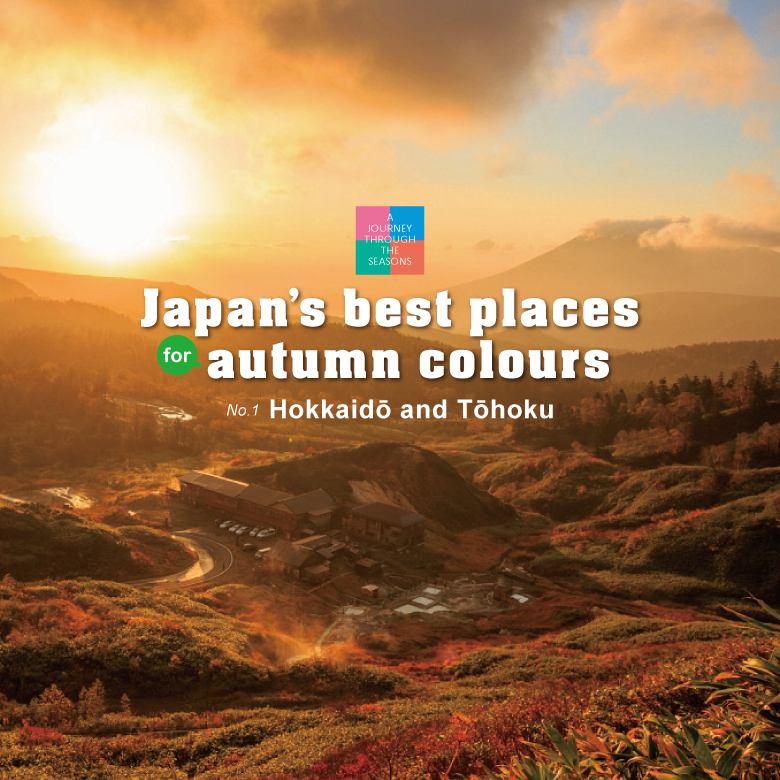
Every year in autumn, from the north to the south and from the mountains to the plains, a brightly coloured tapestry of reds, oranges and yellows ripples across the islands of Japan. All over the country, people are out and about making the most of the autumn scenery.
Text : Sasaki Takashi / English Version : Judy Evans
Keyword : Driving / Aomori Prefecture / Fukushima Prefecture / Hokkaido / Northern Japan / Autumn Scenery / Tōhoku / Akita Prefecture
Nukabira National Highway and Mikuni Tōge Pass (Kamikawa-chō and Kamishihoro-chō, Hokkaidō)
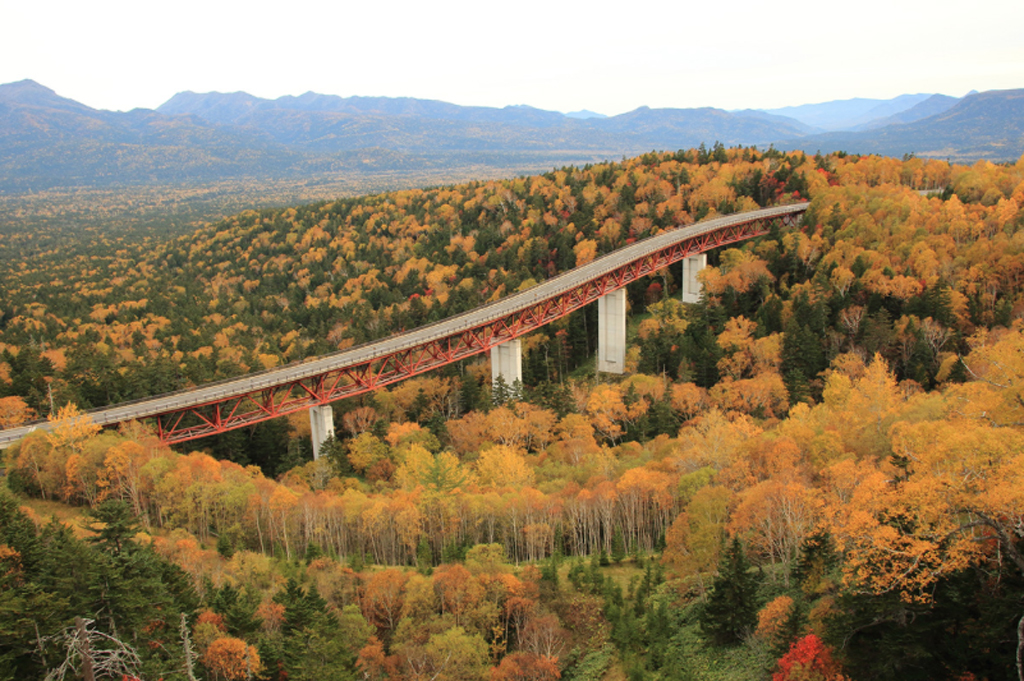
Commanding views of virgin forest from Hokkaidō’s highest mountain pass
The trees in the Daisetsu-zan mountains take on their autumn colours earlier than anywhere else in Japan. On the Nukabira Highway (Route 273) just east of the mountains is Mikuni Tōge, a scenic mountain pass. Driving south towards Mikuni Tōge from the direction of Sōunkyō Gorge in Kamikawa, you emerge from the Mikuni Tunnel to be met by panoramic views of virgin forest. The trees here all take on their autumn colours in late September. The brightly coloured autumn leaves of Erman’s birch, painted maples and Japanese rowans are punctuated by the more sombre greens of Ezo spruce, accentuating the beauty of the scene.
◆ Best time for autumn colours: late September to mid-October.
Access Guide
◎Approximately 95 km or 2½hours’ drive via Route 39 or Route 273 from Asahikawa Interchange on the Hokkaidō Expressway (toll road).
◎Approximately 83 km or 2 hours’ drive from Otofuke-Obihiro Interchange on the Hokkaidō Expressway (toll road).
Lake Towada and Oirase Stream (Towada City, Aomori Prefecture)
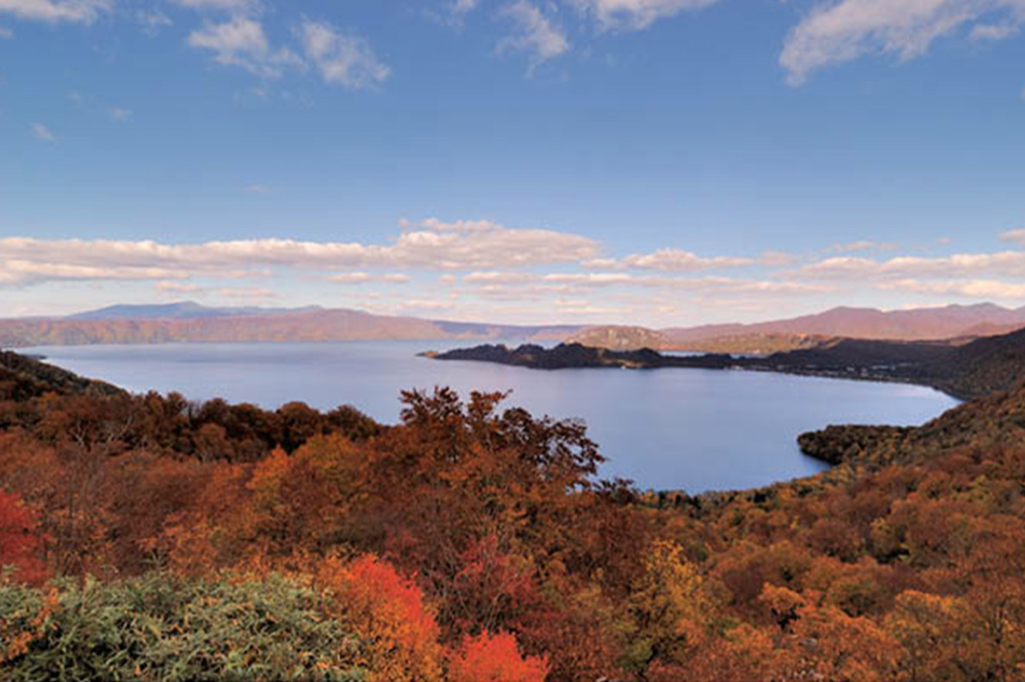

Honshū’s largest crater lake wrapped in multi-coloured autumn shades
Lake Towada in Aomori Prefecture is a crater lake in the caldera of an active volcano – the 12th largest lake in Japan and the country’s largest crater lake. Flowing for about 14 kilometres from the tiny lakeside settlement of Nenokuchi, the Oirase Stream is a renowned viewing spot for autumn leaves. The forest around Lake Towada contains a mix of beech, oak, maple and Japanese rowan. The area displays a rich variety of seasonal colours throughout the year, but autumn is particularly stunning. Popular spots for elevated views of the lake and its surrounds are the Kankodai lookout (瞰湖台) at the bottom of the Ogura Peninsula or the Hakka Tōge lookout on Route 103.
◆ Best time for autumn colours: Mid to late October
Access Guide
◎Approximately 2 hours by bus (heading for Lake Towada) from JR Hachinohe Station.
◎Approximately 35 km or 1 hour’s drive via Route 103 from Towada Interchange on the HokkaidōExpressway.
Hachimantai and Mikaeri Tōge Pass (Hachimantai City, Iwate Prefecture; Semboku City, Akita Prefecture)
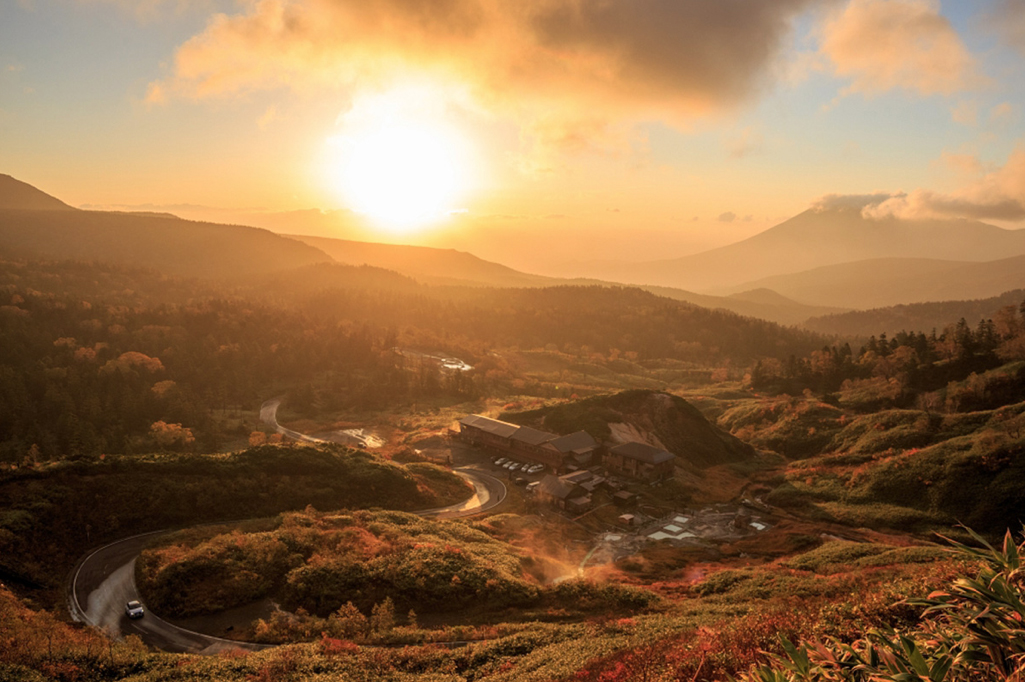
Views of Mt Iwate and a hike through autumn leaves
Route 23, the Hachimantai Aspite Line, is one of the Tōhoku region’s most famous scenic drives. Mikaeri Tōge pass, the highest point on the route, is located just south of one of Japan’s top 100 mountains, Mt Hachimantai (1,613 m). The hike to the top of Mt Hachimantai from Mikaeri Tōge pass takes around thirty minutes and is an excellent way to enjoy the autumn colours. The lookout on Mikaeri Tōge pass offers not only a magnificent autumn panorama, but also excellent views of Mount Iwate rising in solitude from its rolling foothills.
◆ Best time for autumn colours: Late September to mid-October
Access guide
◎Approximately 50 minutes by regular bus from JR Morioka Station.
◎Approximately 25 km or 50 minutes by car via the Aspite Line (Route 23) from Matsuo Hachimantai Interchange on the HokkaidōExpressway (toll road).
JR Tadami Line Railway Bridge No. 1 (Mishima-machi, Fukushima Prefecture)
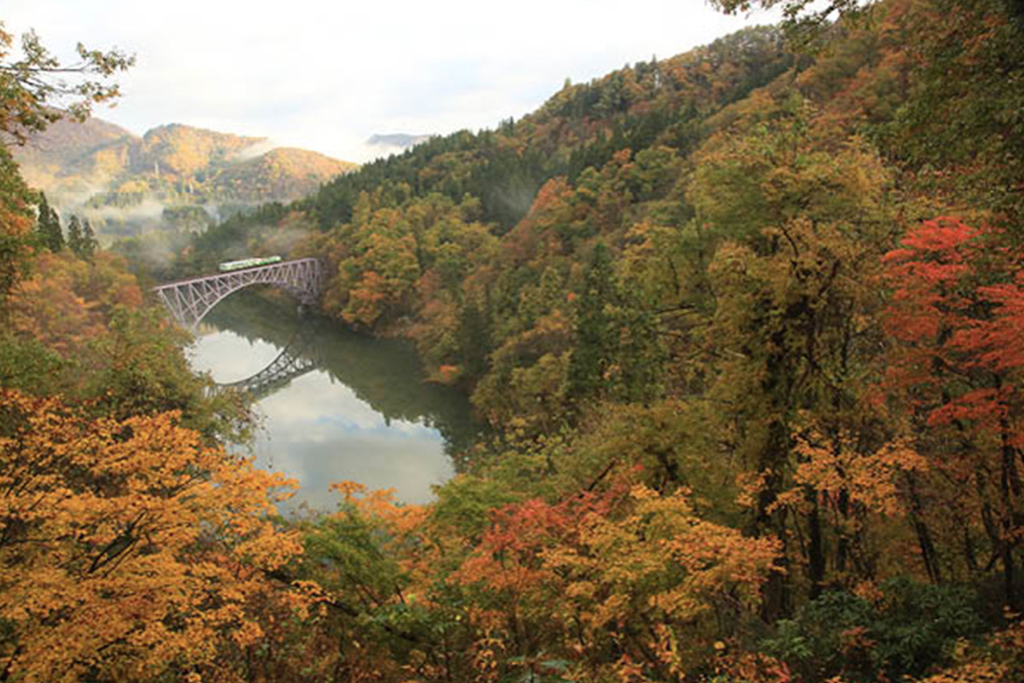

A local line running through virgin beech forest in Oku-Aizu
The JR Tadami Line is a local railway line that connects Aizu-Wakamatsu Station in Fukushima Prefecture and Koide Station in Uonuma, Niigata Prefecture. (The section between Aisu-Kawaguchi and Tadami has been closed since 2011 due to storm damage.) The extensive tracts of virgin beech forest along the railway have been designated a UNESCO Eco-Park. The windows of the train look out onto one of Japan’s most beautiful unspoilt landscapes. The scene in main photo, above, looking down towards JR Tadami Line Railway Bridge No.1, was taken from a spot about ten minutes’ walk from Ozekaido Mishima Juku Roadside Station.
◆ Best time for autumn colours: Late October to mid-November
Access guide
◎About 5 minutes by taxi from Aizu-Miyashita Station (JR Tadami Line) to Mishima Juku Roadside Station.
◎Approximately 14 km or 20 minutes from Aizu-Bange Interchange on the Ban’etsu Expressway.




